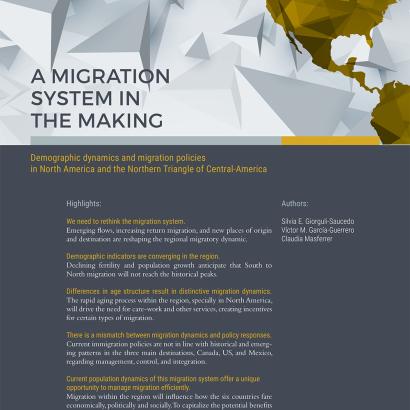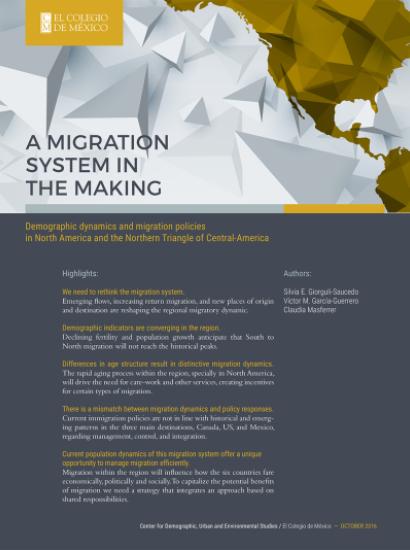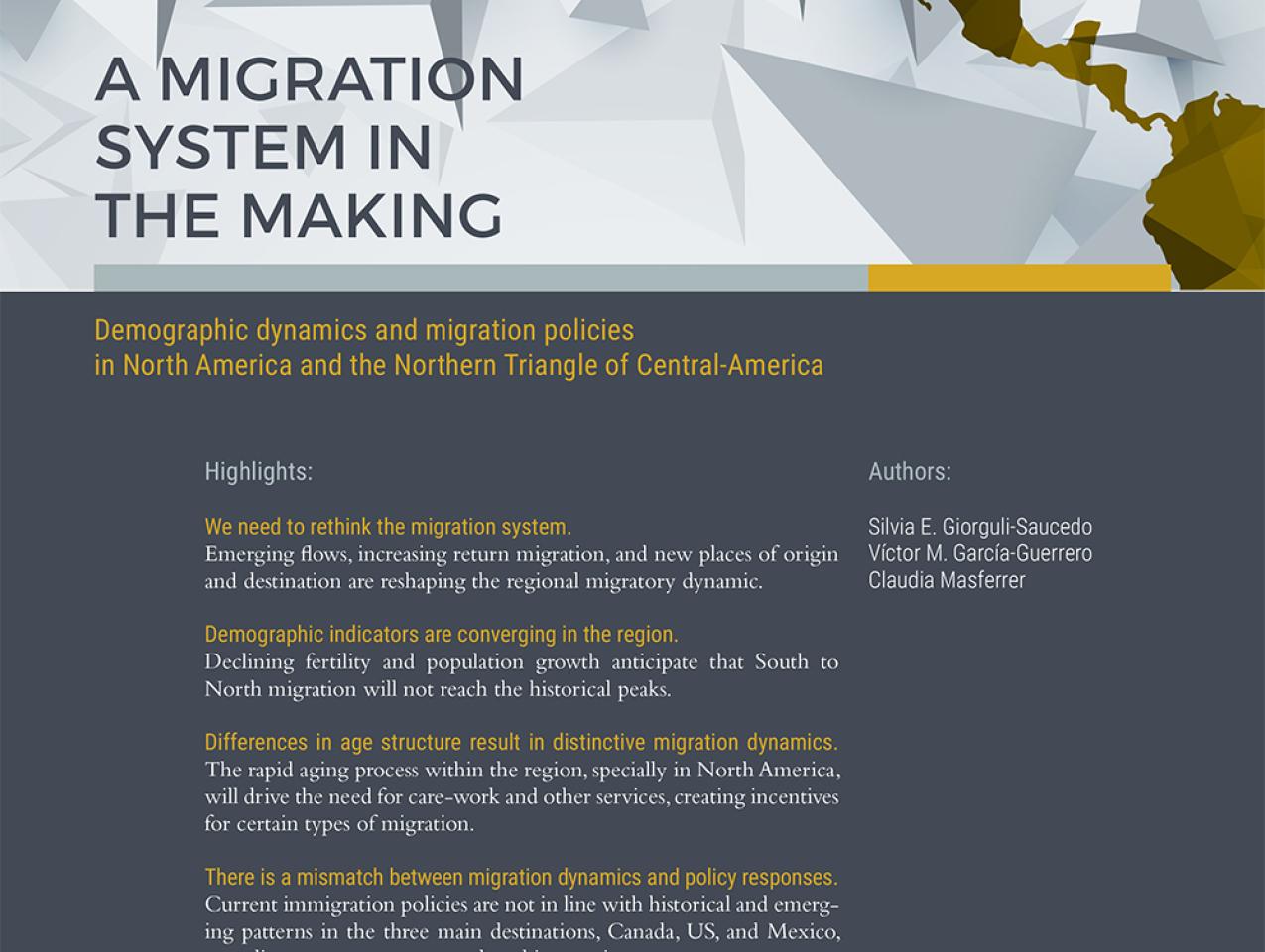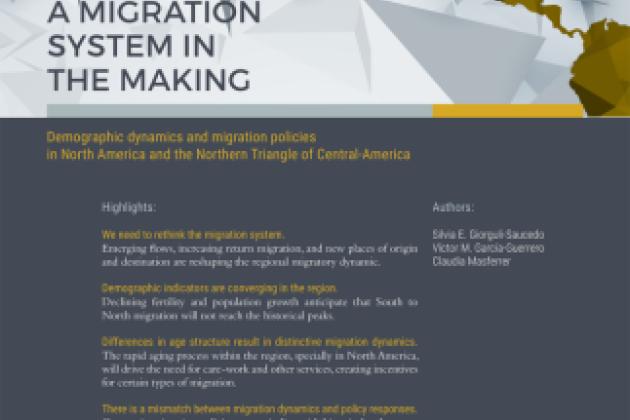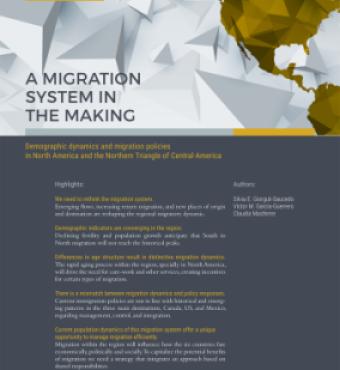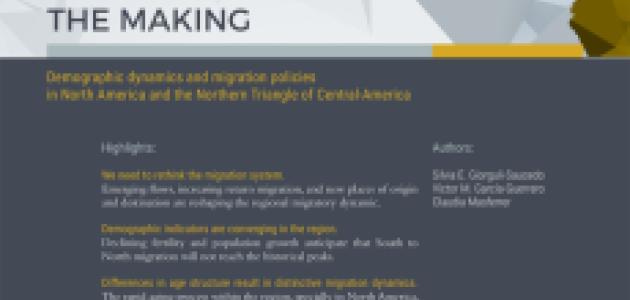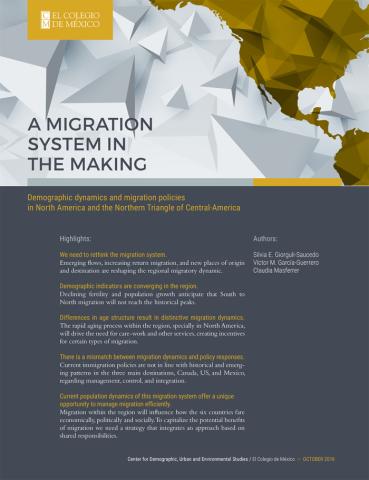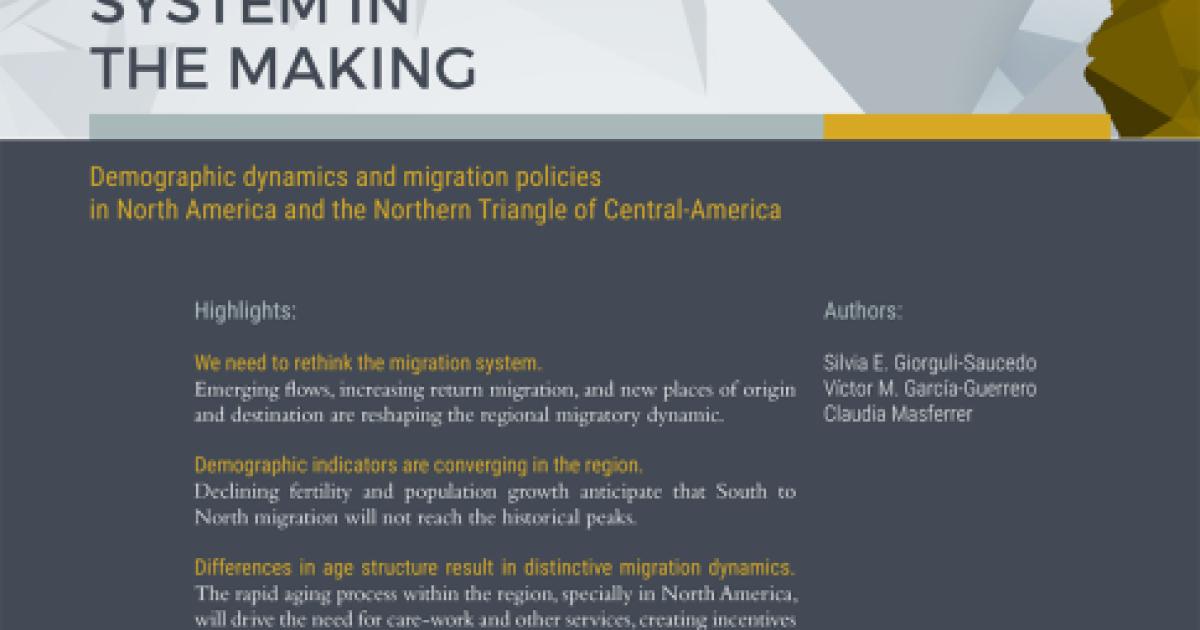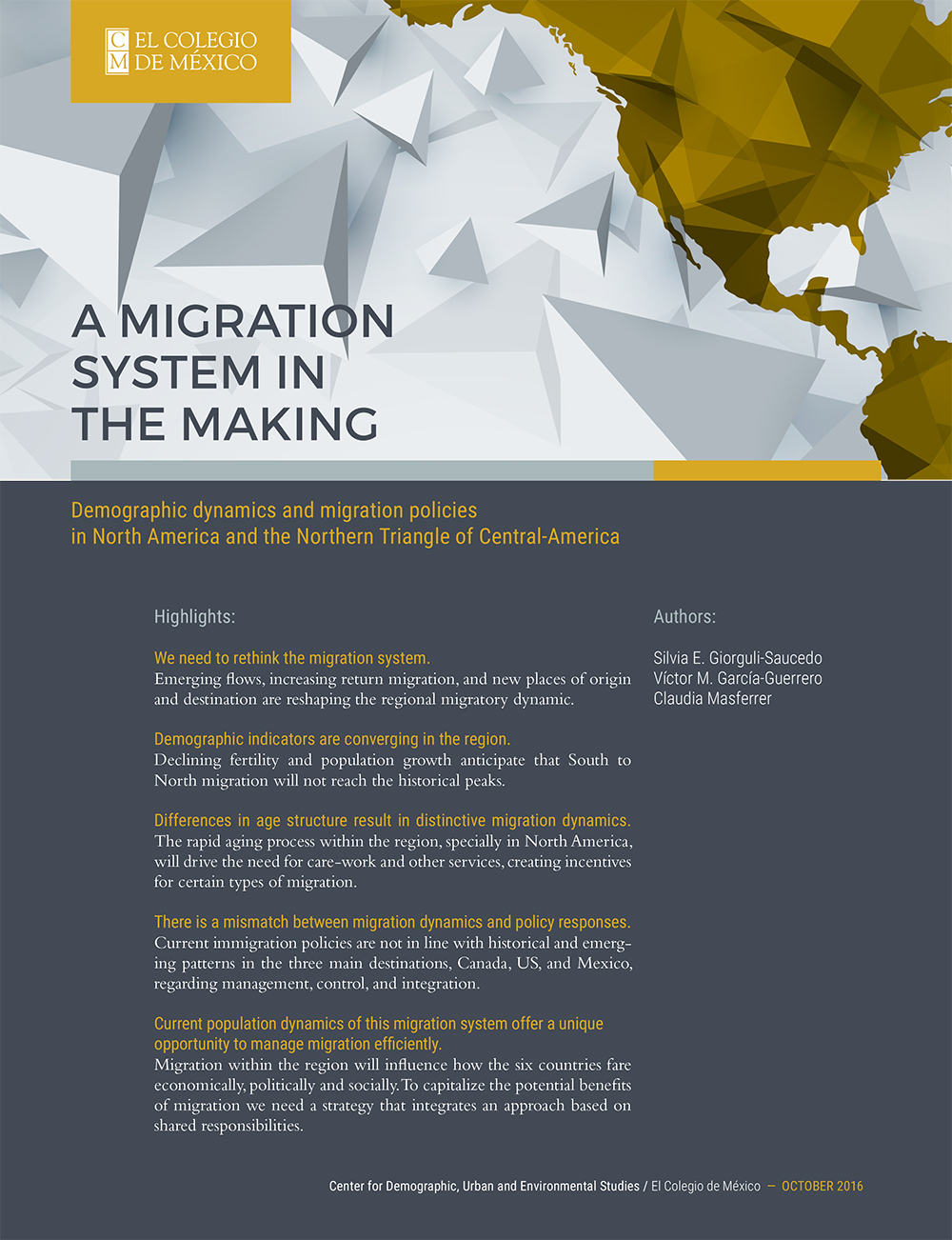
In recent years, the three countries in North America (Canada, the United States and Mexico) and the three in the Northern Triangle of Central America (NTCA: Guatemala, El Salvador and Honduras) have experienced large human mobility within the region. Traditionally dominated by South-North migration, with the US and Canada as the main destinations, this migration system is now more complex as it includes new flows, places of origin, and destinations. This study analyzes socioeconomic and demographic dynamics in the sending and receiving countries alongside the migration policies in the three main destinations to help understand (a) to what extent flows between and within North America and the NTCA may continue in the short term and (b) what changes in migrants profiles can be expected in the future.
This study was conducted by co-authors from the Center for Demographic, Urban, and Environmental Studies at El Colegio de México (CEDUA-COLMEX) in collaboration with the North American Forum. For more, please see: http://cedua.colmex.mx/amsitm.html

FOREWORD
One year ago, the two of us were discussing the rise of North America. It's an issue increasingly on people's minds, and it's increasingly important to the lives of everyday citizens. Having long held an interest in the relationship between our two countries, and with Canada, we thought it would be particularly helpful at this moment to have a paper that lays out the plain facts on Mexican migration to the United States. We knew that the Pew Center and others have claimed, for example, that the net migration rate in recent years has basically been zero or even negative. But this was clearly not the case 20 or 25 years ago, when net migration levels from Mexico to the United States were enormous, so it was important to confirm the facts.
Second, we wanted to recognize the importance of the southern border of Mexico with Central America, which is really the southern border of North America. We know there are major challenges there, we know that there are ongoing changes, and we know that there are more migrants coming across it than 20 years ago. But just how relevant is it? And what role are regional demographics playing?
So that was our goal. We went out to find the best demographers in the region and asked them to carry out a neutral study, which is what you see before you. Preliminary results from this were first presented at a specially convened workshop at the Hoover Institution in the summer of 2016, and then again during the 12th meeting of the North American Forum held in the Mayan Riviera in Mexico in order to receive comments from the assembled experts and businessmen who lead the public and private sectors of the United States, Mexico, and Canada.
George likes to put it this way: If you set out to buy a house, of course you look at the house, but you ask right away, what about the neighborhood? Are there good schools for my children, is it safe, and so on—you find that the neighborhood has as much to do with your experience of living there as the house itself. We live in the neighborhood of North America—it’s very interactive, but it isn’t just about trade. There are all sorts of things we share, and what one party does affects the other, so we have to be very conscious of our neighborhood. For example, today there is an atmosphere of change and uncertainty and fear in Mexico, particularly regarding the medium-term future of the bilateral relationship with the United States. But if you look back, the most amazing modernization of Mexico has occurred in the last thirty years, and that is reflected in the striking changes in the demographics of its people as detailed in this study.
We think that the emergence of North America—the concept of it, and the reality of it as brought about by NAFTA and other efforts—is important for our people, for our security, and for our economies. And one of the secrets of North America is that it has developed in such a way that appeals to each country’s own interests and doesn’t challenge the others’ sovereignties. Instead, opportunities are presented, and people react to them, which is a system that basically works. We are lucky that this region is really an oasis compared to so many other troubled parts of the world. It’s getting challenged, but we have to remind ourselves of the importance of the region as this is our neighborhood, and to keep working at it as times change to get it right. So let’s go.
- Pedro Aspe and George P Shultz
Mr Aspe is the former secretary of finance of the United Mexican States. Mr Shultz is former United States secretary of labor, director of the Office of Management and Budget, secretary of the Treasury, and secretary of state. They were founding co-chairmen of the North American Forum.
AUTHOR BIOS
Silvia Giorguli is currently president of El Colegio de México (Colmex). She joined the Center for Demographic, Urban and Environmental Studies (CEDUA), Colmex as a professor in 2003 and served as director from 2009 to 2015. She was president of the Mexican Society of Demography (SOMEDE) from 2011 to 2013 and founded and directed the Coyuntura Demográfica. Revista de los procesos demográficos en México hoy. Giorguli holds a BA in sociology from the National Autonomous University of Mexico (UNAM), a masters degree in Demography from CEDUA-Colmex, and a PhD in sociology from Brown University. In 2007/08 she was a research fellow at the Center for Advanced Studies in Behavioral Science at Stanford University. Her research focuses on international migration from Mexico to the United States and its consequences on education and family formation on both sides of the border.
Víctor M García-Guerrero is a professor at the Center for Demographic, Urban, and Environmental Studies at El Colegio de México (CEDUA-COLMEX). He holds a PhD in population studies from CEDUA-COLMEX, part of which was developed at the World Population Program in the International Institute for Applied Systems Analysis in Austria He also holds a BSc in actuarial science, a masters of engineering in operations research, and a diploma in advanced econometrics from UNAM. He has consulted in demographic methods for the National Population Council, the Mexican Association of Insurance Institutions, as well as the private sector.
Claudia Masferrer is a professor at the Center for Demographic, Urban, and Environmental Studies at El Colegio de México (CEDUA-COLMEX) and a faculty affiliate at McGill University. She holds a PhD in sociology from McGill University, an MSc in statistics from the University of Texas at Austin, and a BSc in applied mathematics from the Instituto Tecnológico Autónomo de México. In 2015 she was a SSHRC postdoctoral fellow at the Institut National de la Recherche Scientifique, Centre Urbanisation, Culture et Société. Her research focuses on the intersection of migration, family dynamics, and immigrant integration, and how policy mediates these processes.






